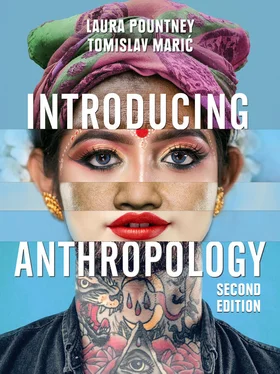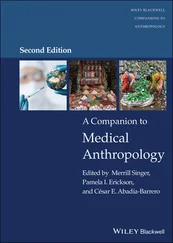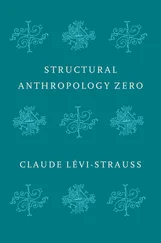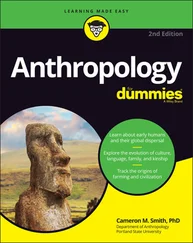
This peacock’s tail is an example of female preference driving the evolution of longer, more colourful tail feathers. (Taychin Olarnwichitwong / Unsplash)
STOP & THINK
Can you think of other traits that humans might look for in each other that are not necessary for survival?
Following Darwin’s contributions, the field of genetics emerged, which went into more detail in explaining biological variation. Gregor Mendel (1822–84) was a naturalist and a monk who made a series of original discoveries in the field of genetics that eventually provided support to Darwin’s theory of natural selection.
More recently, geologists have been able to divide the history of the Earth into specific periods or epochs. It is now generally agreed by scientists, archaeologists and anthropologists that the group of primates to which humans belong, known as hominins, first appeared 6–7 million years ago, with modern humans ( Homo sapiens ) appearing around 200,000 years ago. Paleoanthropology(the study of human fossil remains) and anthropological genetics (the comparative study of genes in humans and other species) have made significant progress in reconstructing the steps that led from our earliest ancestors to modern humans. Since the earliest forms of life date back to 4,000 million years ago, human beings are a relatively recent species in the history of life on planet Earth.
homininsPrimates, species who are closely related to human beings or who are regarded as human
paleoanthropologyThe study of extinct early primates and fossil remains of early primates
There were around twenty different species of early humans. While it was once thought that they existed separately, recent genetic evidence now suggests that there was significant overlap between early human groups. It is now understood that modern humans, on emerging first from Africa around 70,000 years ago, encountered and mated with Neanderthals in the Middle East. Children born from these encounters carried some Neanderthal genes, and, as modern humans advanced throughout Europe and Asia, they carried these genes with them. There have recently been a number of findings about the overlaps between early groups of humans. This section explores some of the most well-known recent examples that provide significant insights into the evolution of hominins.
Australopithecus afarensis : Lucy
Lucy was discovered in 1974 by anthropologist Professor Donald Johanson and his student Tom Gray, at Hadar in northern Ethiopia, and became one of the best documented of all early humans. Johanson and Gray named their fossil skeleton Lucy, after the Beatles song ‘Lucy in the Sky with Diamonds’, which was playing on the radio when the team was celebrating its discovery back at camp. The significance of this discovery was that it confirmed that bipedalism, the ability to walk on two legs, not four, was a key to what makes humans distinctive.
Johanson immediately recognized the bones as belonging to a hominid, and his team eventually unearthed forty-seven bones of a single skeleton dating from 3.2 million years ago. Based on the small size and pelvis shape, they concluded that the skeleton was that of a young female. Like a chimpanzee, Lucy had a small brain, long dangly arms and short legs. However, the structure of her knee and pelvis show that she usually walked upright on two legs.
Together with early Asian people known as Denisovans, Neanderthals are our closest known ancient human relatives. In fact, everyone living outside Africa today has a small amount of Neanderthal in them. Europeans and Asians have approximately 2 per cent Neanderthal DNA. Interestingly, indigenous sub-Saharan Africans have none, or very little Neanderthal DNA because their ancestors did not migrate through Eurasia. The earliest discoveries of Homo neanderthalensis (who lived from 200,000 years ago to around 24,000 years ago) were in various parts of Europe, including Forbes’ Quarry, Gibraltar (1948), and at the Neander Valley near Düsseldorf (1856). In 2019, original DNA was extracted from the two skulls originally discovered in Gibraltar, which revealed new information about each skull – for example, one skull was male and the other was female.
One of the largest collections of fossilized bones of Homo neanderthalensis in the world was found in Croatia, at a site in Krapina, Hušnjakovo, between 1899 and 1905. The most important finding was a skull that belonged to a young, mature Neanderthal woman. This was particularly significant because of the forty-two thin cuts that were found on the frontal bone (the front part of the skull), which were made shortly after the death of the young woman, suggesting possible ritual behaviour. This information provides important evidence that Homo neanderthalensis had a developed culture.
Recent studies confirm that Homo neanderthalensis were self-conscious beings who lived socially as part of a community. They understood how to treat some illnesses and how to care for children and vulnerable groups. They were also very good hunters. The large number of the various artefacts that they made from stone for different purposes, such as scrapers, reveals much information about their technological development.
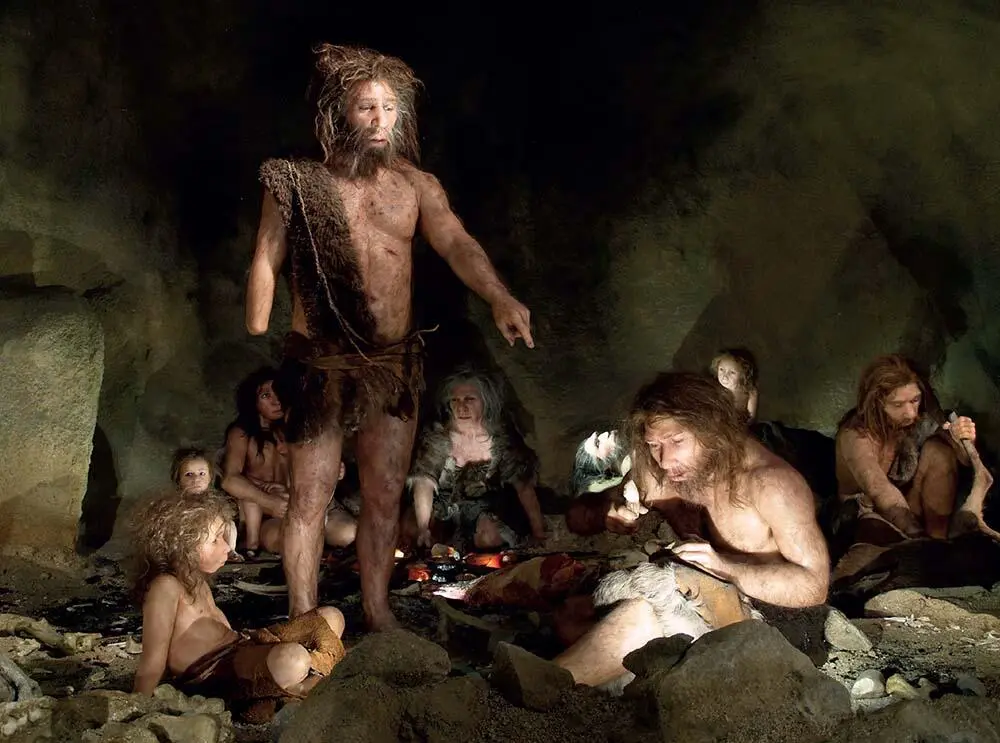
Reconstruction of a Neanderthal community based on archaeological excavations at Krapina, Croatia. (© Krapina Museum, Croatia)
STOP & THINK
If other types of early human still existed today, how do you think Homo sapiens would treat them?
Along with a team of researchers, Svante Pääbo, a leading researcher in evolutionary genetics from the Max Planck Institute, sequenced an entire Neanderthal genome, revealing the connections between Neanderthals, as well as uncovering the existence of another group of early humans, Denisovans (see below). Interestingly, genetic evidence has now conclusively confirmed that there was much more contact between Homo sapiens and Homo neanderthalensis than previously thought. Furthermore, recent findings from Gorham’s cave in Gibraltar suggest that Homo neanderthalensis survived until much later than previously suspected, up to 24,000 years ago, meaning humans and Neanderthals overlapped for longer than previously thought.
Sometimes referred to as ‘the Hobbit’, due to its diminutive stature, Homo floresiensis was an early human who is thought to have lived until 12,000 years ago. Fossilized remains were first discovered in 2003 in the Liang Bua cave, on the Indonesian island of Flores. Researchers were surprised to find that the first set of remains belonged to a 106-centimetre-tall adult female. The remains comprised a nearly complete skull as well as a skeleton, along with at least eight other similarly sized sets of remains. It is now thought that Homo floresiensis may have lived from 95,000 years ago until around 12,000 years ago. There is some debate about how this early human emerged, with evidence recently suggesting that it evolved from an earlier human related to Homo erectus , a 1.8 million-year-old relative. In terms of culture, researchers also uncovered basic stone tools and animal remains in the Liang Bua cave. They postulate that island (or endemic) dwarfismoccurred, whereby Homo floresiensis lacked predators, which accounts for their unusual size.
Читать дальше
